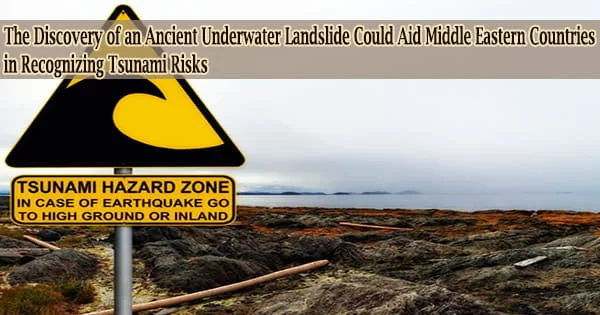Evidence of an ancient underwater landslide and associated tsunami has been discovered in the Gulf of Aqaba, a subsidiary of the Red Sea, by an earth scientist from the University of Miami Rosenstiel School of Marine and Atmospheric Science, which should serve as a warning to many Middle Eastern countries.
Professor and chair of the Department of Marine Geosciences, Sam Purkis, spent four weeks in the region aboard the OceanXplorer research vessel. Purkis saw a striking breach in the seafloor while climbing from 3,000 feet during a submersible dive with a colleague.
It was an unexpected find, but not out of the realm of possibility for the Red Sea, which was formed 30 million years ago by the separation of the African and Arabian tectonic plates.
“Immediately, I realized that what we were looking at was the result of some geological force, which had broken the seafloor,” said Purkis.
Just a little shake in the wrong place and the whole wall could fail, leading to a much larger tsunami than occurred 500 years ago. That area of Egypt, as well as Saudi Arabia, which are urbanizing so rapidly, have certain hazards which haven’t been previously recognized, but they need to be, to avoid a future catastrophe.
Sam Purkis
Purkis then embarked on a scientific trip to learn more about the chasm, collecting rock samples that proved it was formed by a landslide that occurred roughly 500 years ago. He was also able to locate evidence from silt gathered north of the chasm indicating the landslide most likely triggered a wave.
The study, “Tsunamigenic Potential of an Incipient Submarine Landslide in the Tiran Straits,” was published in the journal Geophysical Research Letters of the American Geophysical Union (AGU) on February 3, 2022, and forecasts that future seabed movement could cause more tsunami in the Gulf.
As a result, countries along the coast, such as Egypt, Jordan, Saudi Arabia, and Israel, must ensure that early warning systems for earthquakes and tsunamis are in place.
“Just a little shake in the wrong place and the whole wall could fail, leading to a much larger tsunami than occurred 500 years ago,” Purkis said.
“That area of Egypt, as well as Saudi Arabia, which are urbanizing so rapidly, have certain hazards which haven’t been previously recognized, but they need to be, to avoid a future catastrophe.”
Neom, a business building the Saudi Arabian shoreline, funded the entire OceanXplorer research expedition.





